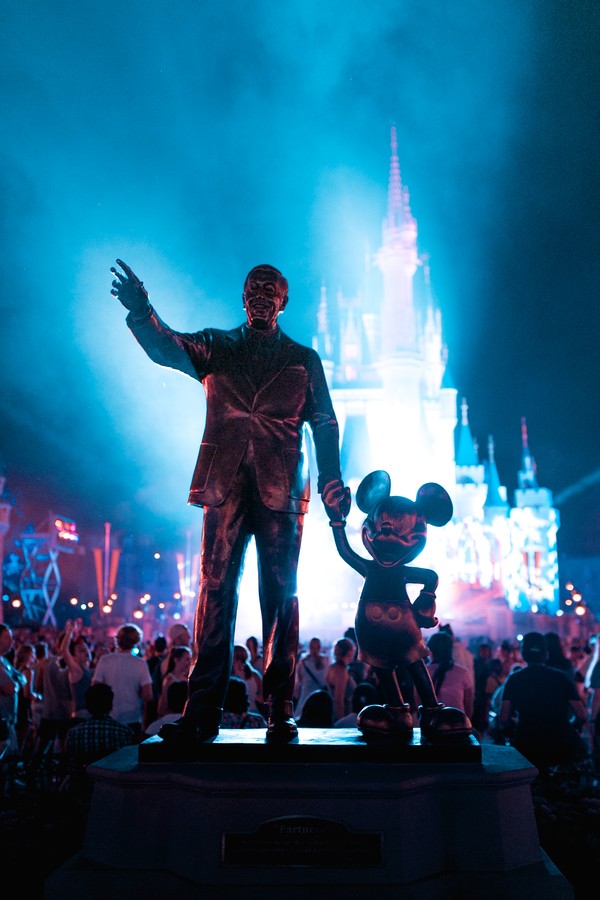How incessant live-action adaptations ruin creativity

WALT DISNEY Studios has been an integral part of many childhoods since its founding in 1923. Its films have set an unprecedented standard for creativity and vividness—offering its viewers an ounce of magic with each one of its cinematic releases. Whilst original live-action film franchises[1] such as Pirates of the Caribbean have become iconic in their own right, the core of Disney is undeniably its animation sector. Films such as Beauty and the Beast (1991), Aladdin (1992), The Lion King (1994), and Mulan (1998) have all become classics. And aside from their shared critical box-office success, they have also been reimagined into live-action adaptations in recent years. These adaptations were initially released to provide a unique twist to the beloved stories, but constant reproductions of such classics have caused more harm than good to the historic film studio.
Live-action adaptations through the years
Despite releasing its first “animation to live-action” adaptation in 1994, the film that officially started Disney’s roster of big-budget remakes was Tim Burton’s Alice in Wonderland (2010) starring Johnny Depp and Mia Wasikowska. Inspired by the 1951 animation of the same name and Lewis Carroll’s novel Alice's Adventures in Wonderland (1865), the remake provided a unique retelling of the story as it strayed away from the original plot. Earning over $1.025 billion at the box office[2], the film’s immense commercial success went on to trigger Disney’s trend of live-action adaptations in subsequent years.
Since the release of Maleficent (2014)[3], which received glowing reviews and once again, a sizeable revenue, Disney has produced live-action adaptations every year without fail. In the 11 years between 2010 and 2021, 14 remakes have been released—6 of which were adapted from Disney princess films. Pinocchio was released in September—exclusively on the streaming platform Disney+. Two additional adaptations––Peter Pan & Wendy and The Little Mermaid––are slated for release in 2023. Projects such as Snow White, Hercules, and Bambi have been greenlit and are either in pre or mid-production.
The main issues
The onslaught of live-action adaptations over the past decade has brought concerns regarding the integrity of Walt Disney Studios, as Disney is starting to become saturated with repackaged material, leaving little room for imaginative new stories. This was the case in 2019, when five out of all ten films released by the studio in the year—including both live-action and animated projects—were adaptations rather than original content.
The accumulation of profit will always supersede critical success in the eyes of a corporation as large as Walt Disney Studios. This was the case with the release of The Lion King (2019), which received polarizing views from both critics and the audience. It was an impressive feat of computer graphic technology, but the narrative and tone of the film felt dull in comparison to the original animation. Mark Kermode put it best in his review for The Guardian, saying, “[the] photorealistic copy of the classic 1994 animated feature is a virtual triumph—but why go to the effort?” The film went on to receive an underwhelming score of 52% on Rotten Tomatoes, but earned $1.663 billion at the box office—another success in Disney’s eyes. In fact, all 14 remakes that were released between 2010 and 2021 earned Disney a total of $8.916 billion, and as long as live-action adaptations continue to earn high profits, Disney will never stop producing these films. In essence, creativity and innovation will always be secondary concerns.
Nostalgia over originality
The successful release of original content in current times has proven that the market remains eager for new material. The animated action-comedy film Zootopia (2016) earned a stellar review of 98% on Rotten Tomatoes before cashing in an estimated $1.024 billion at the box office. It also went on to receive accolades at the Oscars and Golden Globes, cementing its position as a commercial and critical achievement. More recently, Encanto (2021) earned high profits despite its COVID-19 theatrical run, with one of its original soundtracks, “We Don’t Talk About Bruno,” topping the Billboard Hot 100 and UK Singles charts.
The evidence is clear that new content is just as capable of success as live-action adaptations, but Disney remains steadfast in playing it “safe.” The plot and characters of classic films have already been tested with and popularized by the public; therefore, high profits with remakes are expected. This aversion to taking risks narrows opportunities to produce original content, thus diminishing creativity in the film studio.
Adaptations could be used as a safe alternative as they buy time to produce more experimental films. That way, the studio could make a profit despite the occasional box-office failure. Yet, with the relentless release of live-action adaptations, Disney is running out of chances to hone its skills in original content creation—a gateway to a creative plateau.
[1] Excluding films released under Disney subsidiaries such as Marvel Studios, Lucasfilm, and 20th Century Studios
[2] Box Office Mojo
[3] Maleficent (2014): The live-action adaptation of Sleeping Beauty (1959)

